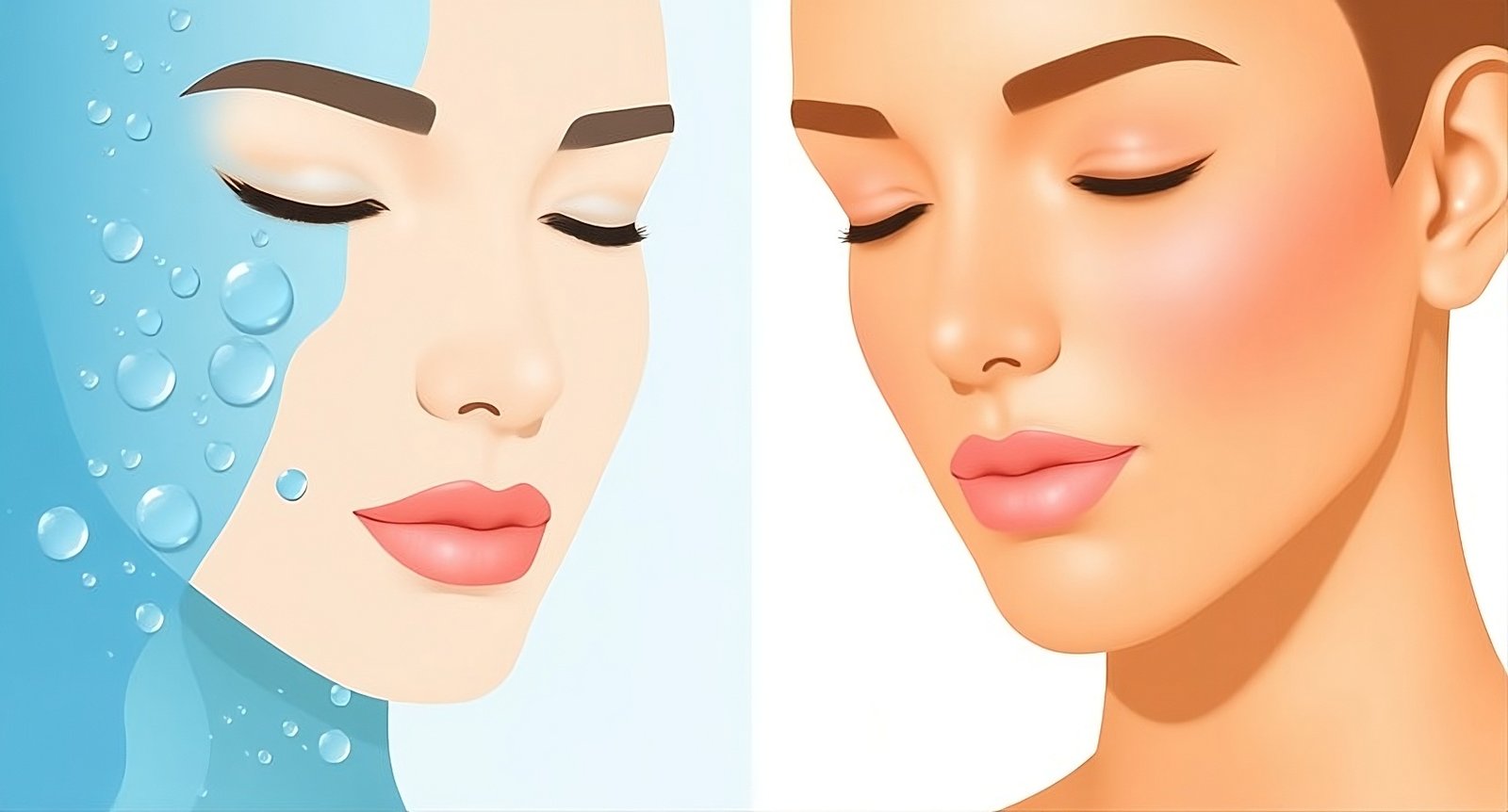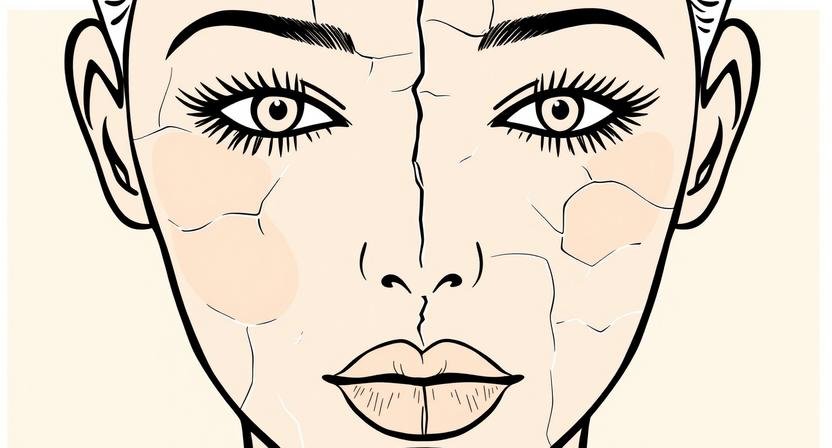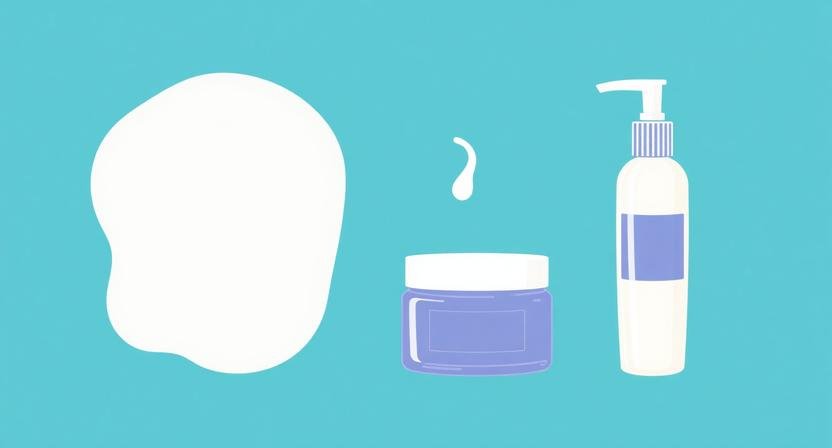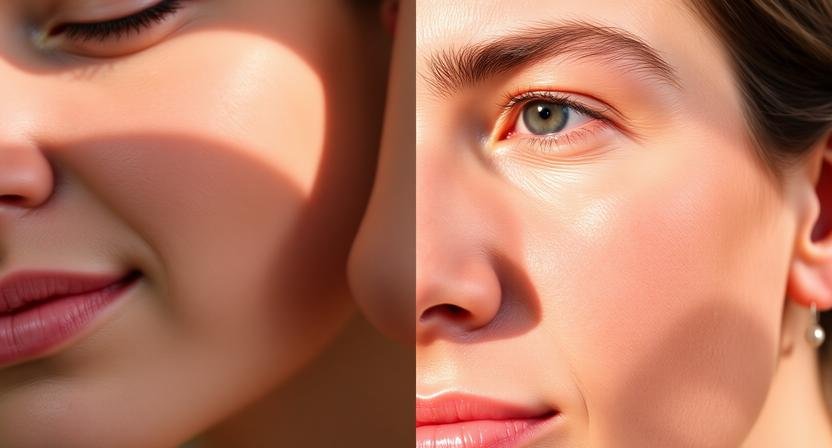Hydrated vs Moisturized Skin: What’s the Difference?

The best skin days are never just about one thing. It is not only glow, or only smoothness, or only “my foundation actually sat right today.” Underneath all of that there is one quiet balance your face is always chasing. Water and oil. Hydration and moisture. When those two line up, skin looks bouncy, calm, and kind of expensive, even if your routine is not.
But here is where it gets confusing. One brand tells you that your skin is dry. Another calls it dehydrated. One product promises deep hydration. Another says intense moisture. TikTok says slug. Your cheeks feel tight but your nose is shiny, and you are ready to throw the whole shelf away. The good news, “hydrated vs moisturized skin” is not a mystery once you break it down. You do not need a chemistry degree. You just need to know what your skin is missing and which products actually fill that gap.
Let’s walk through what hydrated skin really is, what moisturized skin really is, how to tell which one you are lacking, and how to build a routine that gives you both without a 15-step saga.
Hydrated vs Moisturized: The One-Sentence Difference
Hydrated skin = skin that has enough water.
Moisturized skin = skin that has enough oil and barrier lipids to hold that water in.
You can have:
Skin that is hydrated but not moisturized
Skin that is moisturized but not hydrated
Skin that is both
Skin that is neither (this is when everything looks and feels rough)
Once you see water and oil as two separate jobs, your routine gets much easier to plan.
What “Hydrated Skin” Really Means
Hydration is about water inside the skin. When skin is hydrated, the top layers are plump and flexible. Light reflects more evenly. Fine lines look softer. Products sink in nicely instead of sitting on top or stinging.
Signs your skin is well hydrated:
Feels comfortable after cleansing
Looks smooth and a bit bouncy
Makeup glides instead of catching on tiny lines
You do not feel a tight mask across your cheeks and forehead
Hydration lives in the stratum corneum, the outer layer of your skin. Inside that layer are natural moisturizing factors (NMFs) like amino acids, urea, and some sugars. They love water and help hold it in place. When this system runs low, your skin gets dehydrated.
What “Moisturized Skin” Really Means
Moisture is about oils and lipids that sit in and around your skin cells. Think of these like the “mortar” between bricks. The bricks are your skin cells. The mortar is a mix of ceramides, cholesterol, and fatty acids, plus whatever you add on top (plant oils, butters, balms).
When you are moisturized:
Skin feels soft and supple, not squeaky
You have a slight, healthy slip when you touch your face
You do not see flaky patches around your nose, mouth, or eyebrows
Products do not burn on contact
Moisturizers do three main jobs:
Add water (if they contain humectants)
Smooth the surface (emollients)
Seal things in (occlusives and barrier lipids)
Read more: (Humectants vs Emollients vs Occlusives).
Some formulas lean more watery, some more oily. That is why one cream can feel amazing in winter and way too heavy in summer.
Dehydrated vs Dry: Not the Same Thing
This is where a lot of confusion starts.
Dehydrated skin = not enough water
Can be oily, combo, or dry
Often caused by over-cleansing, harsh actives, weather, not enough “water steps”
Dry skin = not enough oil
More of a skin type
Your glands simply make less sebum
You can be oily and dehydrated at the same time. This is very common. Your nose and forehead shine, but your cheeks feel tight and your smile lines look more obvious. That usually means you are washing too hard, skipping hydration, and expecting oil to do a job that belongs to water.
How to Tell What Your Skin Is Missing
Signs You Are Dehydrated (Need More Water)
Skin feels tight or “too small” after cleansing
Fine lines look deeper by the end of the day
Skin looks dull or tired even if you are oily
You see tiny, thin flakes under makeup
Products that never bothered you suddenly sting
You can also do a simple test. Gently pinch your cheek. If it feels papery and takes a moment to bounce back, you are probably dehydrated.
Signs You Are Dry (Need More Oil / Lipids)
Little to no shine, even by afternoon
Flakes that do not go away with just a hydrating serum
Skin feels rough without moisturizer
Rich creams sink in fast and still leave you wanting more
Lips and hands are often dry too
If you check boxes in both lists, welcome to the club. Many people need more water plus a smarter, slightly richer seal, not just one or the other.

Ingredients That Hydrate (Water Givers)
Hydrating ingredients are called humectants. They pull water into the top layers of your skin.
Look for:
Glycerin – simple, cheap, incredibly effective
Hyaluronic acid – different weights can hydrate different layers
Aloe vera – soothing, light hydration
Panthenol (pro-vitamin B5) – hydrating and calming
Sorbitol, propanediol, betaine, urea (in low amounts) – all support water balance
These usually live in:
Toners and essences
Hydrating serums
They feel wet, juicy, and often disappear fast.
Ingredients That Moisturize (Oil & Barrier Givers)
Moisturizing ingredients are emollients and occlusives. They smooth, soften, and slow water loss.
Look for:
Squalane – light, skin-like oil that works on most types
Ceramides, cholesterol, fatty acids – true barrier rebuilders
Shea butter, cocoa butter – richer emollients for very dry skin
Plant oils like jojoba, sunflower, meadowfoam – diverse textures, some very light
Dimethicone and other silicones – create a silky film and reduce rough feel
Petrolatum, mineral oil, lanolin – very strong occlusives that lock water in
These usually live in:
Creams and lotions
Balms and ointments
“Barrier repair” products
They feel cushy, creamy, or a bit waxy.
How to Layer: Water First, Then Oil
The simple rule for “hydrated vs moisturized” is water first, then something to keep it there.
A basic order:
Cleanse with lukewarm water and a gentle cleanser
Apply a hydrating product on damp skin (mist, hydrating serum)
Apply moisturizer to seal that in
In the morning, finish with sunscreen
If you skip step 2, you might feel soft but still tight inside.
If you skip step 3, you might feel fresh for 20 minutes, then dry again.

Building a Routine For Different Skin Situations
Oily but Dehydrated
Your skin:
Shiny by noon
Tight after washing
Makeup separates around the mouth or between brows
What helps:
Gentle gel cleanser, no harsh foaming twice a day
Hydrating serum with glycerin or hyaluronic acid, morning and night
Lightweight gel-cream with a bit of squalane or ceramides
Avoid stripping toners and over-exfoliation
Here, hydration calms that “emergency oil” your skin loves to pump out. Once it feels safer, it often produces less.
Dry and Dehydrated
Your skin:
Flaky, tight, and dull
Loves creams, still feels dry later
May sting easily
What helps:
Cream or milk cleanser
Hydrating serum or essence under everything
Mid-weight or rich cream with ceramides, cholesterol, and fatty acids
Occlusive layer at night in cold weather (like a balm or a little petrolatum on top)
Gentle exfoliation only once in a while to keep flakes in check
You need both water and a real seal, not just one thick oil.
Combo Skin
Your skin:
Oily in T-zone, normal to dry cheeks
Some areas flake, others shine
What helps:
Gentle cleanser
Hydrating serum all over
Gel-cream through the center, richer cream on cheeks
Blotting and light powder in the day instead of skipping moisturizer
Think “zone care” rather than whole-face extremes.
Common Mistakes That Break Hydration and Moisture
Over-cleansing
Three or four face washes a day is too much for almost everyone. Twice is plenty. More if you really need it after a heavy workout, but keep the cleanser gentle.
Very hot water
Feels nice, melts your skin’s own oils, and increases water loss. Lukewarm is your friend.
Only using mists
Face mists feel amazing. They are not enough on their own. Without a moisturizer on top, the water evaporates and can leave you feeling drier.
Only using heavy oils
Oil without water can soften, but if your skin is dehydrated underneath, it can feel greasy and tight at the same time. Always give your skin a water step first.
Too many strong acids and retinoids at once
These can be great, but they also disrupt the barrier when overused. A stressed barrier loses both water and lipids faster. Space your actives out and buffer them with a good moisturizer.

How Seasons Change Your Hydration vs Moisture Needs
Summer
Air often has more humidity
You may need less heavy cream, more hydrating serums and gels
Focus on lightweight moisture and oil control, but keep some barrier support
Winter
Air is dry, heaters pull water from your skin
You need more cushion and possibly more occlusive layers
Hydrating serum plus richer cream is better than just “more cream” alone
You can use the same hydrator year-round and adjust the moisturizer based on weather.
Simple Morning and Night Templates
Morning
Rinse or gentle cleanse
Hydrating serum (glycerin, hyaluronic acid, aloe)
Moisturizer suited to your skin type
Broad-spectrum sunscreen
This gives water, then moisture, then protection.
Night
Remove makeup and SPF, then cleanse
Hydrating serum or essence
Treatment if you are using one (retinoid, acid, etc.) on its schedule
Moisturizer to lock in hydration
Optional balm layer on very dry areas in cold months
On days when your skin feels angry, skip step 3 and give your barrier a break.
Quick FAQ
Can my skin be hydrated but not moisturized?
Yes. It may look plump right after products, then quickly feel rough or tight. That means you gave it water but did not seal it well.
Can my skin be moisturized but not hydrated?
Also yes. It can feel greasy or waxy on top, but still look dull and lined. That means you added oil without restoring water first.
Do I need both a hydrating serum and a moisturizer?
You do not have to, but most people see the best results when they combine them, especially if they use actives or live in harsh climates.
Is drinking water enough to hydrate my skin?
Drinking water is great for your body, but it does not replace topical care. The outer layers still need help holding that water in.
Do matte products dry out my skin?
Not always. Some matte formulas are very hydrating inside. Others are drying. Check the ingredients and how your face feels an hour later.
The Bottom Line
“Hydrated vs moisturized skin” is not just a cute skincare phrase. It is the basic map for happier, calmer skin. Hydration gives your face the water it needs to look fresh and bouncy. Moisture gives it the lipids it needs to hold that water in and stay comfortable.
Once you start asking “am I missing water, oil, or both,” your routine stops being random. You do not buy every trending cream. You build a small, smart stack that does what your skin is actually asking for.
Water first. Then a good seal. That is the whole secret.